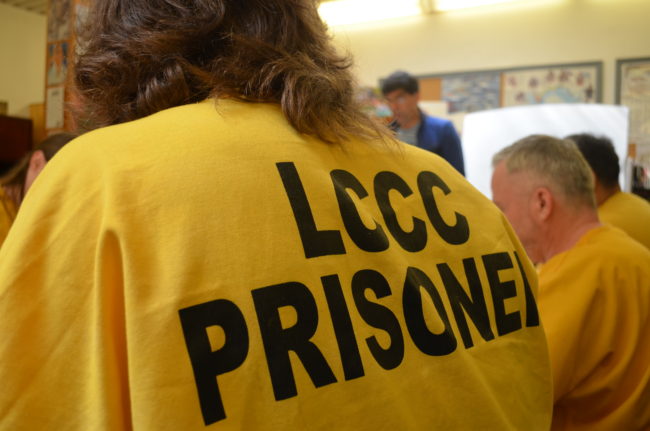
The number of inmates has grown by 27 percent in the past decade and unless policy changes are made, prison populations are likely to grow another 27 percent by 2024.
That’s according to Terry Schuster, a senior associate with the Pew Charitable Trusts. Pew has been gathering data aimed at guiding Alaska’s legislators in corrections policymaking. The House Finance Committee heard the numbers Monday morning, at about the same time that Gov. Bill Walker released the state corrections report.
Schuster outlined the data behind Alaska’s increase in prison population and traced its cause to past policies.
“One of the things that stands out to us, or the criminal justice commission, is when they look at statutory changes in the past 10 years, one of those major changes has been increases in sentence length,” he said. “So for felony offenders, presumptive sentence lengths have gone significantly up in just the last 10 years, and we are seeing it in the data in terms of people staying in prison longer, so the population goes up. ”
Schuster told the committee that tough anti-crime policies of the 1990s reduced the amount of crime, but escalated prison populations. Now, about half of Alaska’s prison inmates are sentenced offenders, the other half is split roughly between pretrial inmates and supervision violators. He told the committee that pretrial inmates account for 81 percent of the growth in inmate populations, but not because more arrests are being made.
“It was caused by longer lengths of stay during the pretrial period,” Schuster said. “Ten years ago, they were staying an average of six days pretrial. Today they are staying an average of nine days. Over 11,000 people last year came in on nonviolent misdemeanor charges. So if you have a three day increase in length of stay and multiply it by thousands of people, it adds up to a lot of prison beds the state was not using 10 years ago.”
Schuster said prison stays have increased across the board due to legislative, judicial and parole board decisions. He said prison costs are the second fastest growing budget item in most states, behind Medicaid.
Pew has been working with the Alaska Criminal Justice Commission for several months, in line with a national movement toward justice reform.
“And the idea, generally, is that states will pass measures into statute to try to focus their prison beds on the most serious and violent offenders, and then take some portion of the savings that they achieve and invest them into alternatives to prison and treatment and strengthening probation things that are aimed at getting better public safety outcomes for less money,” he said.
The data compiled by Pew is taken from the state corrections department. It will be included in a report to be released Dec. 10 by the Alaska Criminal Justice Commission.
